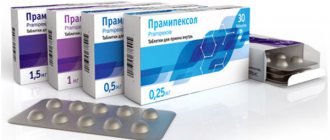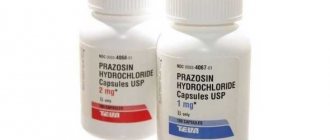In search of new sensations and ways to get pleasure, drug addicts continually turn to conventional medications. As a result, addicted people sometimes actually get the opportunity to experience something new. Although most often this means changing one passion for another. One of these experiments was carried out on an anesthetic drug with a beautiful trade name. And now many people have a question: Is Lyrica a drug or is it still a medicine? As is the case with other pharmaceutical drugs, Lyrica can help a person or cause him great harm.
Attention!
Does your loved one use? We have been providing affordable drug treatment services throughout Russia since 1996. A unique treatment program. Free consultation with a narcologist by phone 8-800-200-99-32 . Free call within the Russian Federation.
Release form and composition
Lyrica is produced in the form of hard gelatin capsules filled inside with white or almost white powder, varying in size, marking and color depending on the content of the active substance. “Pfizer” is written on the cap in black ink, and on the body there is a product code and dosage:
- “PGN 25”: size No. 4, with white lid and body;
- “PGN 50”: size No. 3, with a white cap and a body with a black stripe;
- “PGN 75”: size No. 4, with a red-brown to dark red-brown cap and a white body;
- “PGN 100”: size No. 3, with a lid and body from red-brown to dark red-brown;
- “PGN 150”: size No. 2, with white lid and body;
- “PGN 200”: size No. 1, with a lid and body from light red-brown to red-brown;
- “PGN 300”: size No. 0, with a red-brown to dark red-brown cap and a white body.
Lyrica capsules (regardless of the content of the active substance) are produced in blisters of 10 pieces, in a cardboard pack there are 10 blisters; in blisters of 14 pcs., in a cardboard pack 1 or 4 blisters; in blisters of 21 pcs., in a cardboard pack 4 blisters.
1 capsule contains:
- Active ingredient: pregabalin – 25, 50, 75, 100, 150, 200 or 300 mg;
- Auxiliary components: talc, corn starch, lactose monohydrate;
- Capsule bodies of 25, 50, 75, 150 and 300 mg: gelatin, titanium dioxide;
- Capsule bodies of 100 and 200 mg: gelatin, red iron oxide dye, titanium dioxide;
- Capsule caps of 25, 50 and 150 mg: titanium dioxide, gelatin;
- Capsule caps of 75, 100, 200 and 300 mg: titanium dioxide, red iron oxide dye, gelatin;
- Ink: concentrated ammonium solution (300 mg capsules) or concentrated ammonia solution (25, 50, 75, 100, 150 and 200 mg capsules), ethanol, purified water, isopropanol, black iron oxide dye, shellac, potassium hydroxide, propylene glycol , butanol.
Contraindications
- Age up to 17 years (inclusive);
- Rare hereditary diseases, including galactose intolerance, lactase deficiency, glucose/galactose malabsorption;
- Hypersensitivity to the components of the drug.
Lyrica should be used with caution in cases of heart or kidney failure or a history of drug dependence.
During pregnancy, the use of the drug is permissible only in cases where the expected effect of therapy for the mother significantly exceeds the possible risk for the developing fetus.
If it is necessary to use the drug by nursing women, breastfeeding should be interrupted during therapy.
Directions for use and dosage
The tablets are taken orally, regardless of food intake. The daily dose of Lyrica is 150-600 mg, divided into 2-3 doses.
Dosage regimen:
- Neuropathic pain: the initial daily dose is 150 mg, then after 3-7 days, depending on tolerability and the achieved clinical effect, it is increased by 2 times; after 1 week, if necessary, the maximum daily dose of 600 mg can be used;
- Epilepsy: initial daily dose – 150 mg; after 1 week, depending on the achieved effect and tolerability of the drug, it can be increased by 2 times; after another 1 week, the maximum daily dose can be used - 600 mg;
- Fibromyalgia: initial dose – 75 mg 2 times a day; after 3-5 days, depending on tolerability and the achieved effect, it can be increased to 300 mg, and in the absence of a positive effect - up to 450 mg per day. After 1 week, if necessary, the dose can be increased to the maximum daily dose of 600 mg;
- Generalized anxiety disorder: initial daily dose – 150 mg; then after 1 week, the dose, depending on tolerability and the effect achieved, can be increased by 2 times. In cases of no positive effect, the daily dose is increased to 450 mg, and after another 1 week, if necessary, to 600 mg per day (maximum dose).
When discontinuing Lyrica, it is recommended to stop taking it gradually, over a minimum of 7 days.
The dose of the drug for renal dysfunction is selected individually for men and women, taking into account creatinine clearance (CC) according to the following formulas:
- Men: CC (ml/min) = (body weight in kg) x (140 - age in years) / 72 x serum creatinine (mg/dl);
- Women: CC (ml/min) = CC indicator for men x 0.85.
The daily dose of pregabalin for patients on hemodialysis is determined taking into account renal function. Immediately after each hemodialysis session (lasting 4 hours), patients take an additional dose of pregabalin, calculated based on renal function:
- CC ≥ 60 ml/min: starting daily dose – 150 mg; maximum daily dose – 600 mg; frequency of administration – 2-3 times a day;
- CC ≥ 30 – < 60 ml/min: starting daily dose – 75 mg; maximum daily dose – 300 mg; frequency of administration – 2-3 times a day;
- CC ≥ 15 – < 30 ml/min: starting daily dose – 25-50 mg; maximum daily dose – 150 mg; frequency of administration – 1-2 times a day;
- CC <15 ml/min: starting daily dose – 25 mg; maximum daily dose – 75 mg; frequency of administration – 1 time per day;
- Additional dose after dialysis: starting daily dose – 25 mg; maximum daily dose – 100 mg; frequency of administration – 1 time per day.
No dose adjustment is required for liver dysfunction.
Due to decreased renal function, elderly patients (over 65 years of age) may require a reduction in the dose of pregabalin.
If you miss a dose of pregabalin, take the next one as soon as possible, but you should not take the missed dose if it is already time for the next one.
How to overcome addiction to Lyrica pills and what it is - Narconon program
The question of how to get off Lyrica and stop using all its substitutes is a question that pertains to the entire field of drug rehabilitation. This medicine behaves like a regular drug, so the path to recovery from it will be appropriate.
Now the most popular method in Russia is drug treatment: they detoxify the body and, in some clinics, re-socialize the drug addict. However, the method is not ideal: treating some drugs with others pollutes the body even more.
There are also non-traditional methods - the 12-step program, various clubs of anonymous drug addicts, treatment at home. But their disadvantage is the lack of detoxification at all, which does not allow one to get rid of the consequences of taking the drug.
However, you can refer a person to our Narconon program, where help is technological and modern, but at the same time gentle and humane. Rehabilitation uses non-drug products and procedures that allow a person to completely get rid of cravings and predisposition to Lyrica.
This program is a world leader in the field of complete eradication of drug addiction: it has an indicator of 87% of people who have completely quit drugs and returned to normal life (without any reservations such as the need to continue taking medications, visiting psychologists, taking substitutes, etc.).
Contact us!
Share:
Angel Dust (PCP)
Fun balls
Side effects
When using Lyrica, side effects may occur in certain systems and organs:
- Psyche: often – decreased libido, irritability, disorientation, euphoria, insomnia, confusion; uncommon – increased insomnia, depersonalization, mood lability, anorgasmia, apathy, depression, agitation, anxiety, difficulty finding words, depressed mood, unusual dreams, hallucinations, panic attacks, increased libido; rarely – high spirits, disinhibition;
- Hematopoietic system: rarely – neutropenia;
- Metabolism: often – weight gain, increased appetite; uncommon – hypoglycemia, anorexia; rarely – weight loss;
- Nervous system: very often – drowsiness, dizziness; often - memory impairment, ataxia, impaired balance, coordination or attention, dysarthria, lethargy, amnesia, tremor, paresthesia, sedation; uncommon – fainting, cognitive disorders, dyskinesia, hypoesthesia, psychomotor agitation, nystagmus, intention tremor, speech impairment, postural dizziness, stupor, loss of taste, myoclonic convulsions, weakened reflexes, hyperesthesia, burning sensation on the skin and mucous membranes; rarely – dysgraphia, parosmia, hypokinesia;
- Organ of vision: often – diplopia, blurred vision; uncommon – decreased visual acuity, asthenopia, narrowing of visual fields, increased lacrimation, swelling, pain or dryness in the eyes; rarely - increased brightness of visual perception, mydriasis, strabismus, eye irritation, loss of peripheral vision, oscillopsia, impaired perception of depth of vision, flashing sparks before the eyes;
- Hearing organ and vestibular apparatus: often – dizziness; infrequently – hyperacusis;
- Cardiovascular system: infrequently - increase or decrease in blood pressure, hot flashes, cold extremities, AV (atrioventricular) block of the first degree, tachycardia; rarely - sinus: bradycardia, tachycardia or arrhythmia;
- Respiratory system: uncommon – dry nasal mucosa, cough, shortness of breath; rarely - snoring, nosebleeds, tightness in the throat, rhinitis, nasal congestion;
- Digestive system: often – constipation, bloating, vomiting, flatulence, dry mouth; uncommon – gastroesophageal reflux, hypoesthesia of the oral mucosa, increased salivation; rarely – pancreatitis, dysphagia, ascites;
- Dermatological reactions: uncommon – papular rash, sweating, skin hyperemia; rarely – urticaria, cold sweat;
- Musculoskeletal system: uncommon - myalgia, muscle stiffness, arthralgia, pain in the limbs or back, muscle twitching, joint swelling, muscle spasms; rarely – rhabdomyolysis, neck pain, spasm of the cervical muscles;
- Urinary system: infrequently - urinary incontinence, dysuria; rarely – renal failure, oliguria;
- Reproductive system: often – erectile dysfunction; uncommon – sexual dysfunction, delayed ejaculation; rarely – enlargement of the mammary glands, amenorrhea, dysmenorrhea, discharge from the mammary glands, pain in the mammary glands;
- Laboratory indicators: uncommon - decreased platelet count, increased activity of alanine aminotransferase, aspartate aminotransferase, creatine phosphokinase; rarely - an increase in glucose and creatinine in the blood, a decrease in potassium levels and the number of leukocytes in the blood;
- Infections and infestations: uncommon – nasopharyngitis;
- Other: often - gait disturbance, feeling of intoxication, fatigue, peripheral edema; uncommon – generalized edema, thirst, pain, chest tightness, asthenia, chills, falls; rarely – hyperthermia.
In post-marketing surveillance, the following side effects of Lyrica were noted:
- Urinary system: urinary retention;
- Nervous system: loss of consciousness, cognitive impairment, convulsions, headache;
- Digestive system: rarely - diarrhea, nausea, swelling of the tongue;
- Reproductive system: gynecomastia;
- Organ of vision: loss of vision, keratitis;
- Dermatological reactions: rarely - Stevens-Johnson syndrome, skin itching;
- Respiratory system: pulmonary edema;
- Allergic reactions: rarely - angioedema reactions (including facial swelling), hypersensitivity reactions;
- Cardiovascular system: prolongation of the QT interval, chronic heart failure;
- Other: increased fatigue.
special instructions
In some patients with diabetes mellitus, an increase in body weight during pregabalin therapy may require dose adjustment of hypoglycemic drugs.
If symptoms of angioedema develop, treatment should be interrupted.
Pregabalin, like other antiepileptic drugs, may increase the risk of suicidal thoughts and behavior. Therefore, patients receiving Lyrica should be under close medical supervision.
According to observational data, pregabalin therapy is accompanied by drowsiness and dizziness, due to which the risk of accidental injuries (falls) increases in older people. Cognitive impairment, confusion, and loss of consciousness have also been reported during post-marketing use. Therefore, patients should exercise caution until possible side effects have been assessed.
There is insufficient information about the possibility of discontinuing other anticonvulsants when seizures are suppressed with pregabalin and the advisability of monotherapy with Lyrica. There have been reports of seizures, including status epilepticus and petit mal seizures, during or immediately after treatment with pregabalin.
If blurred vision or other visual disturbances occur during therapy, discontinuation of the drug may lead to the disappearance of these symptoms.
Cases of renal failure have been reported; in some cases, after discontinuation of Lyrica, organ function was restored.
Undesirable effects observed as a result of drug withdrawal after long-term or short-term use: diarrhea, nausea, anxiety, depression, convulsions, insomnia, dizziness, flu-like syndrome, sweating, headache.
If there is a history of drug dependence, careful medical monitoring for symptoms of pregabalin dependence is required.
The frequency of side effects from the central nervous system (especially drowsiness) increases during the treatment of central neuropathic pain caused by damage to the spinal cord, which, however, may be a consequence of the summation of the effects of the drug and other drugs taken in parallel (for example, antispastic). This circumstance must be taken into account when taking pregabalin for this indication.
Cases of encephalopathy have been reported, especially in patients with concomitant diseases that may lead to its development.
During therapy, patients should refrain from engaging in potentially hazardous activities that require increased attention and speed of psychomotor reactions.
Consequences of use
Of course, the consequences of using this drug are the side effects themselves. However, they are only problems that directly arise for the addict.
There are also longer-term consequences of use:
- addiction. It is no less strong than when using hard drugs. This is either a direct, honest dependence on the drug, or a requirement to purchase pills to make it easier to get off heroin or opium. These are just manipulations: this is how a drug addict tries to get Lyrics;
- coma and death. They occur with direct overdose of the drug or with any suboptimal effect on a weakened body (for example, a person can be killed by any attack of the disease that occurs due to taking the drug);
- inability to concentrate and concentrate, drop in IQ. Contrary to the false idea that drugs leave the body through fluids, this is not the case. They accumulate in adipose tissue and are released during exercise or sweating in a sauna, even years later. A person gets the above problems on an ongoing basis, and not for a short time.
Drug interactions
Pregabalin is unlikely to enter into a pharmacokinetic interaction, since it is mainly excreted in the urine in an uncomminuted form, does not bind to plasma proteins, undergoes minimal metabolism, and does not inhibit the metabolism of other drugs in vitro (in vitro).
There was no evidence of clinically significant pharmacokinetic interactions between pregabalin and valproic acid, phenytoin, gabapentin, oxycodone, lamotrigine, lorazepam, ethanol and carbamazepine. Diuretics, oral hypoglycemic drugs, tiagabine, insulin, topiramate and phenobarbital do not have a clinically significant effect on its clearance.
The steady-state pharmacokinetics of pregabalin and oral contraceptives containing ethinyl estradiol and/or norethisterone did not change when used simultaneously.
There are reports of respiratory failure and the development of coma with simultaneous use of pregabalin with other drugs that depress the central nervous system.
Pregabalin has also been reported to have a negative effect on the gastrointestinal tract when used in combination with drugs that cause constipation (such as non-narcotic analgesics).
No clinically significant effects on breathing were observed when oral pregabalin was repeated with lorazepam, oxycodone, or ethanol. It is possible that pregabalin enhances the motor and cognitive impairment caused by oxycodone. It may enhance the effects of lorazepam and ethanol.
What kind of drug is Lyrica?
Among drug addicts and in narcology, the effect of Lyrica is used for one common purpose: pain relief from withdrawal symptoms. However, drug dealers saw other consequences of its use:
- the lyrics themselves cause a buzz in some categories of drug addicts;
- it enhances the effect of opiates and other drugs;
- pregabalin cannot be detected by any test;
- the drug does not weaken appetite and does not cause obvious mental disorders, which makes it possible to hide its use from other people.
Addicts mix Lyrica with alcohol and other drugs to get the greatest effect. They unwittingly spread it, telling each other how it works, this “Lyrica”, “a pill for a high.” Instructions for use, of course, are not used.









